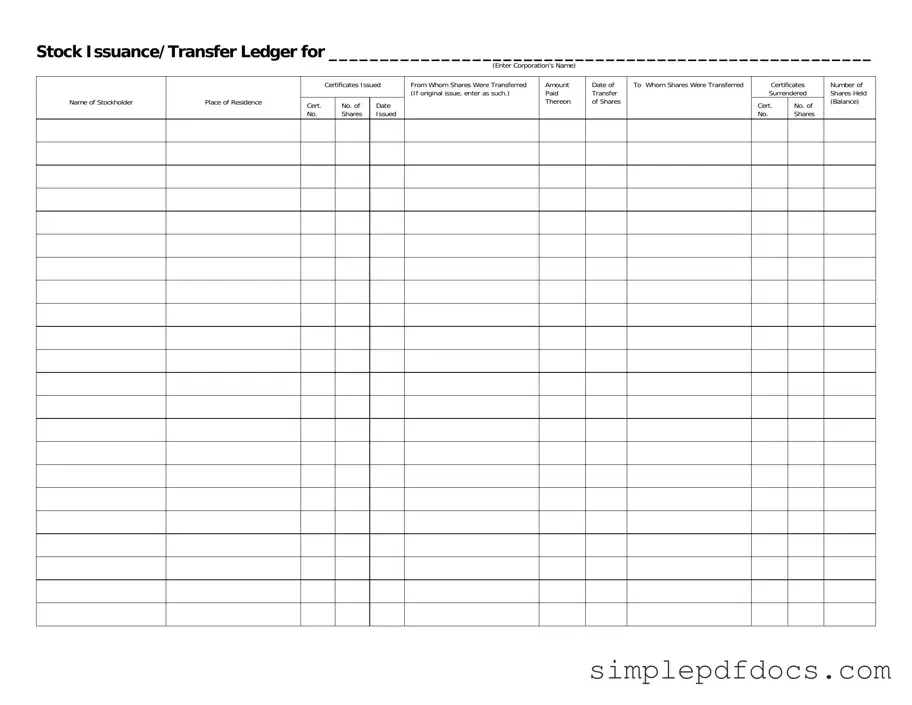The Stock Transfer Ledger form plays a crucial role in the management of a corporation's stock transactions. This document serves as an official record, detailing the issuance and transfer of shares among stockholders. Each entry includes vital information such as the corporation's name, the stockholder's details, and the certificates issued. The form captures the certificate numbers and the dates on which shares were issued, ensuring transparency in ownership. It also tracks from whom the shares were transferred, making it clear whether the shares are part of an original issue or a subsequent transfer. Additionally, the ledger records the amount paid for the shares, providing a clear financial trail. When shares change hands, the form notes the date of transfer and identifies the new stockholder. Certificates surrendered during the transfer process are documented, along with the corresponding certificate numbers. Finally, the ledger reflects the balance of shares held, giving a complete picture of stock ownership at any given time. This comprehensive approach not only aids in maintaining accurate records but also supports compliance with regulatory requirements, making it an essential tool for corporations and their shareholders alike.
